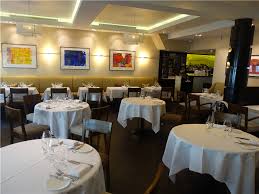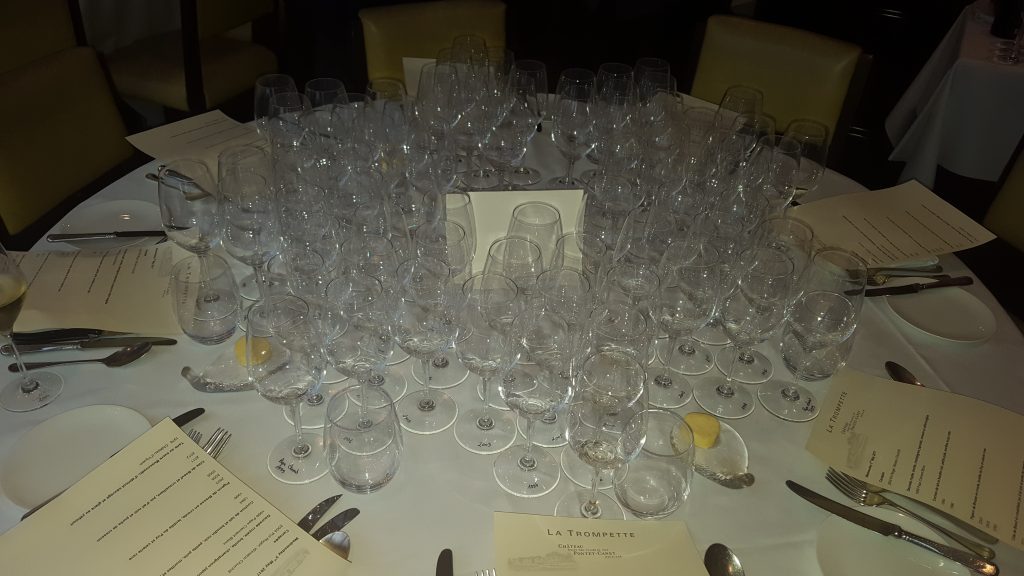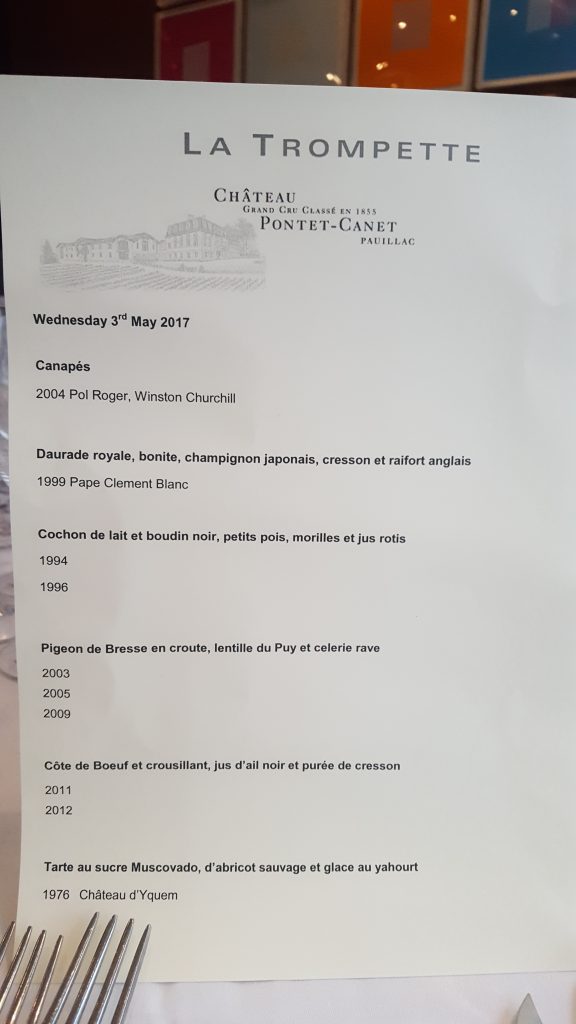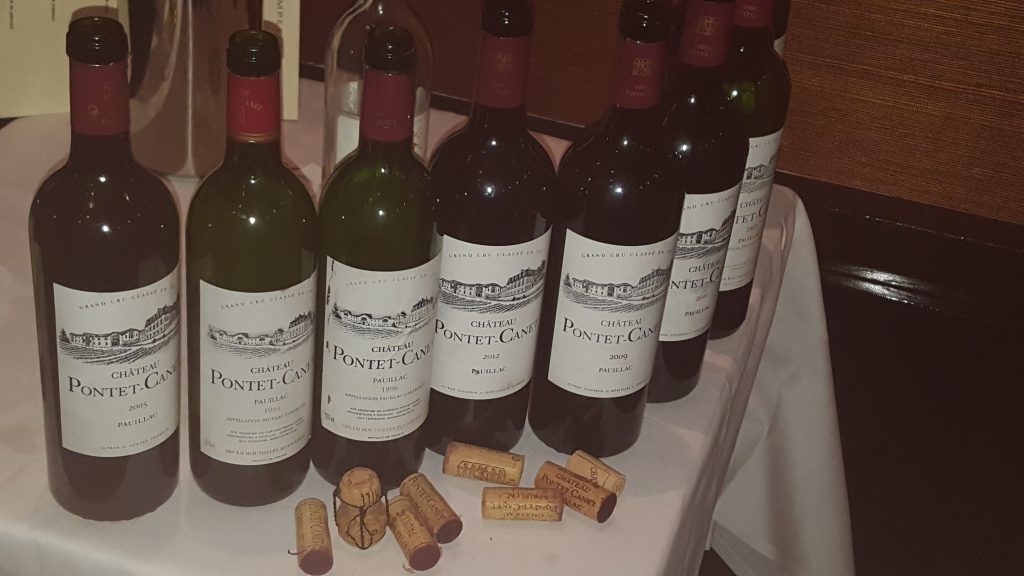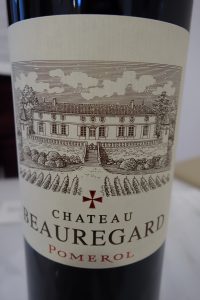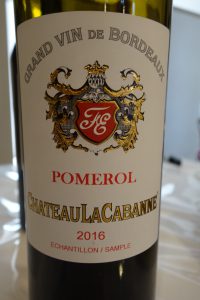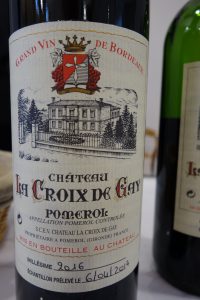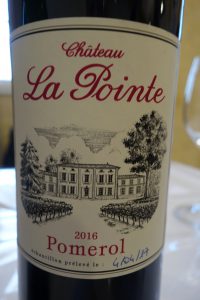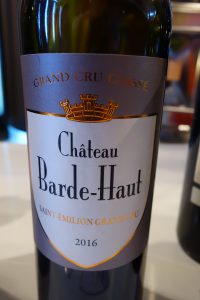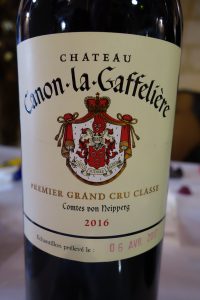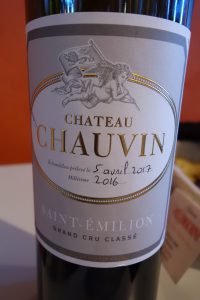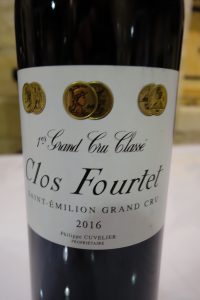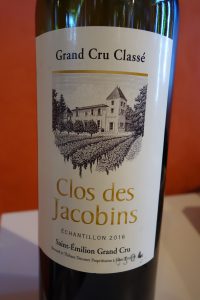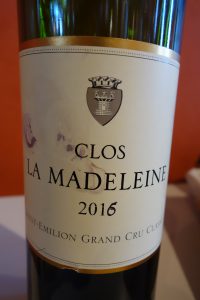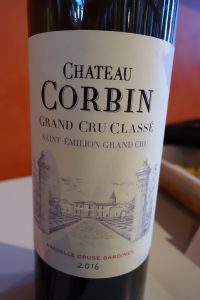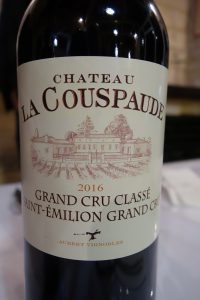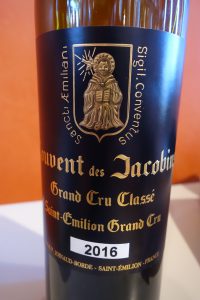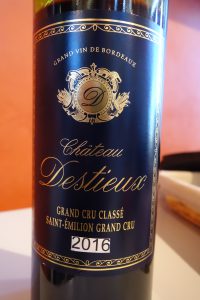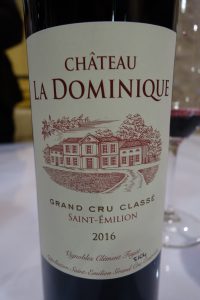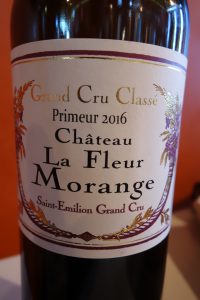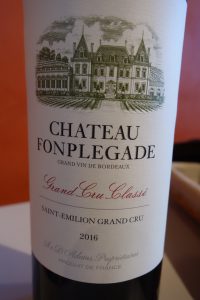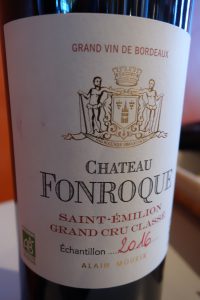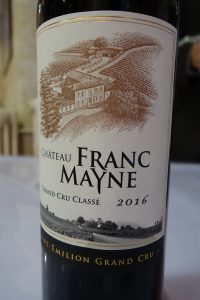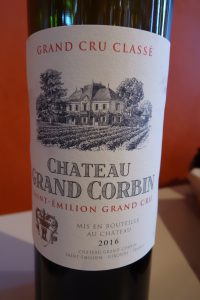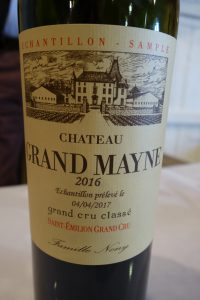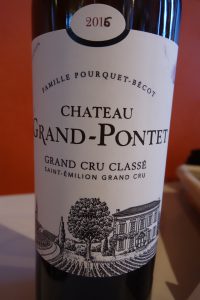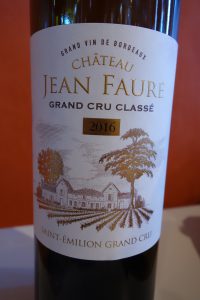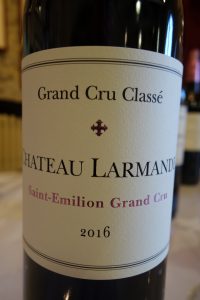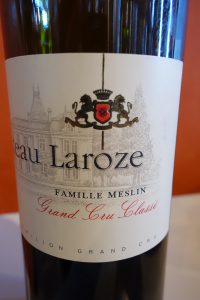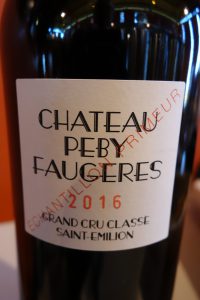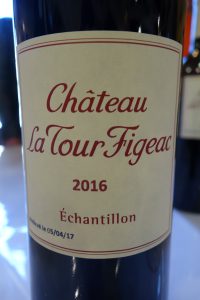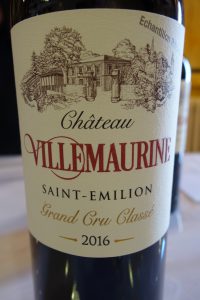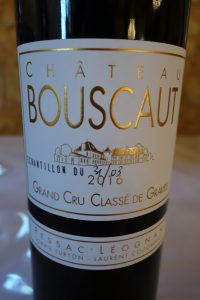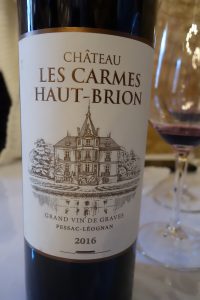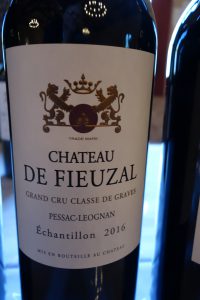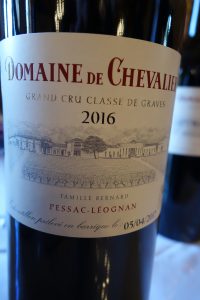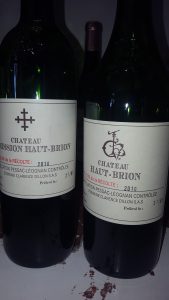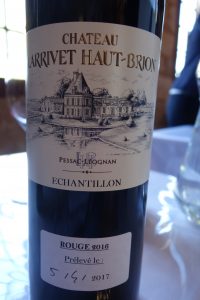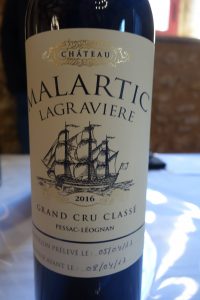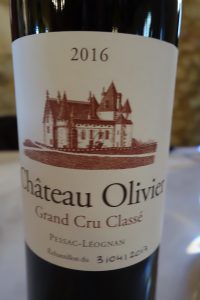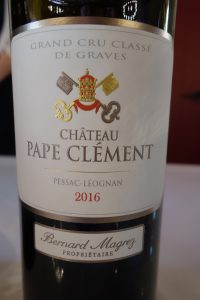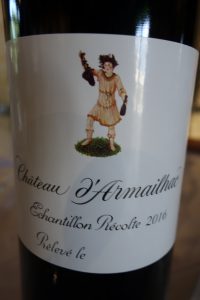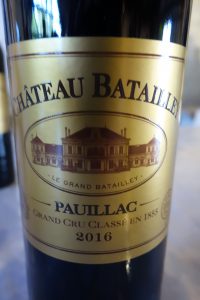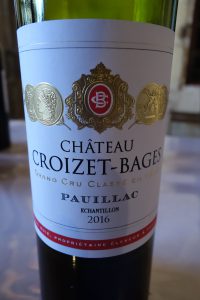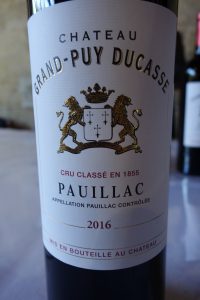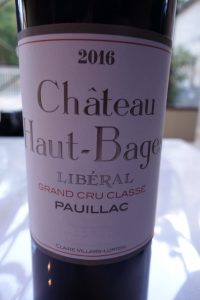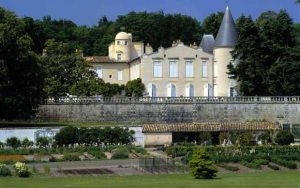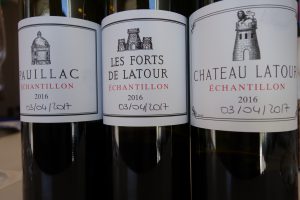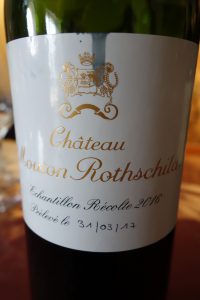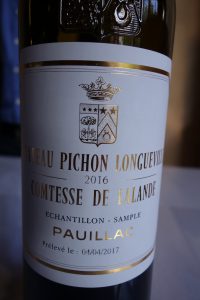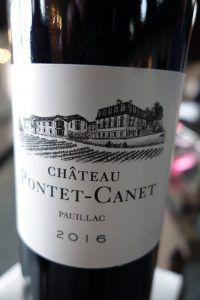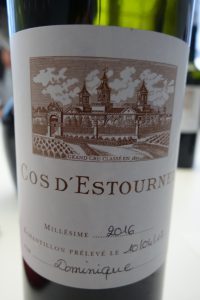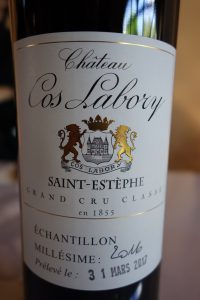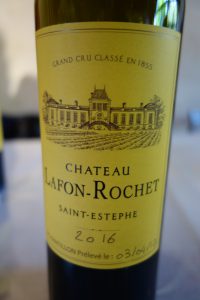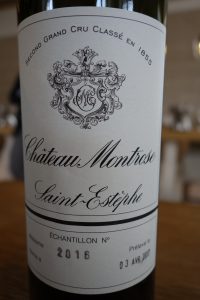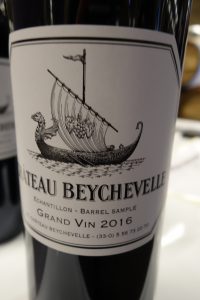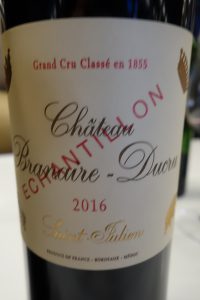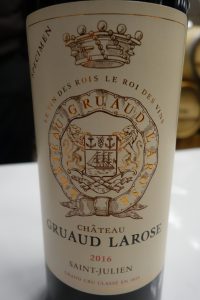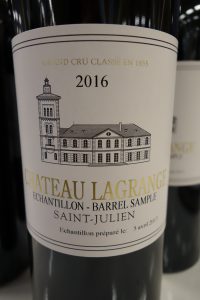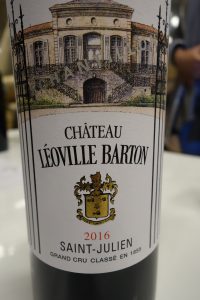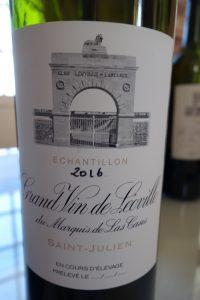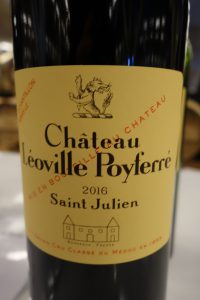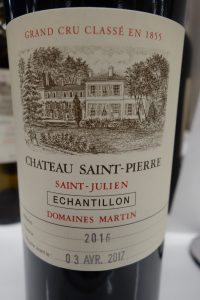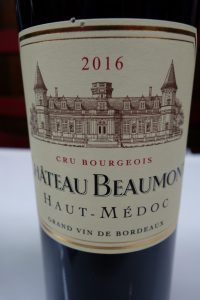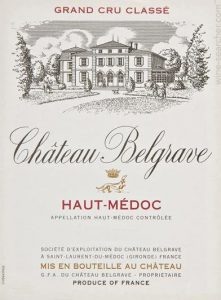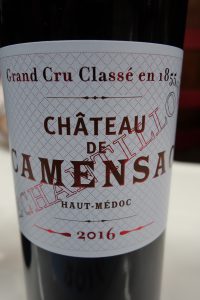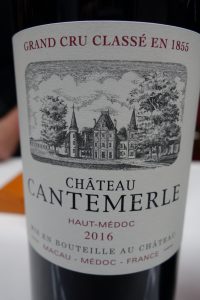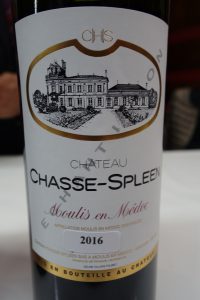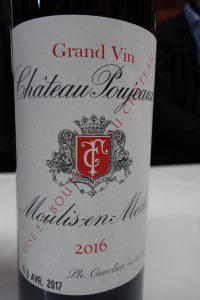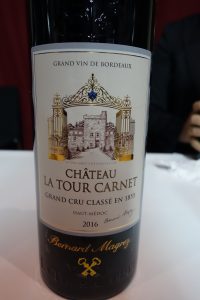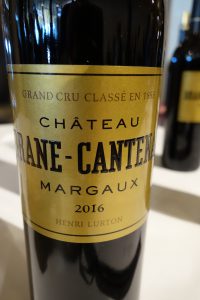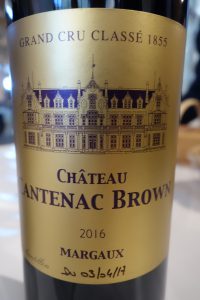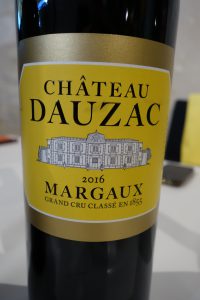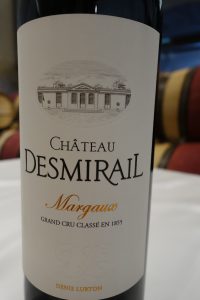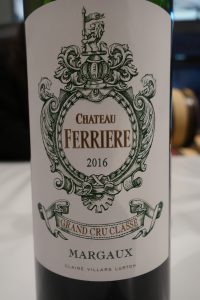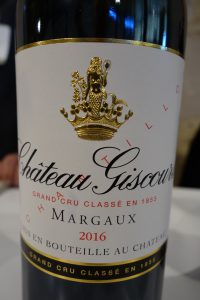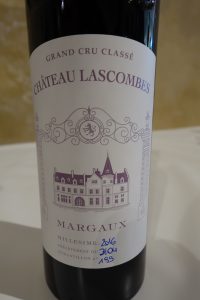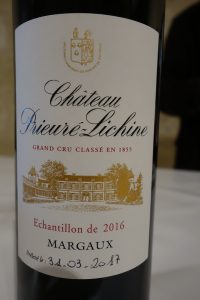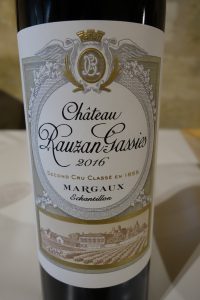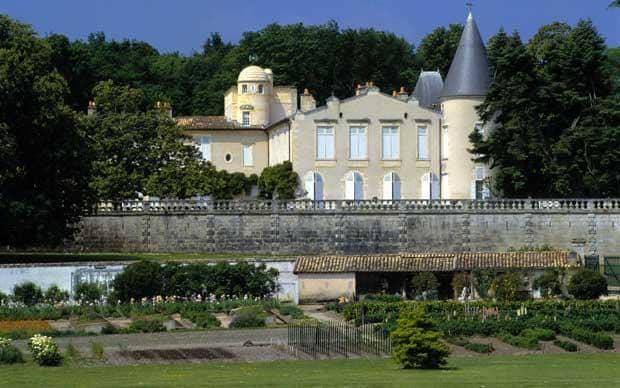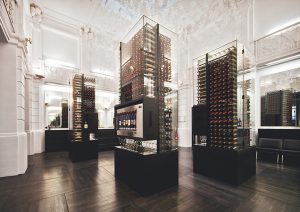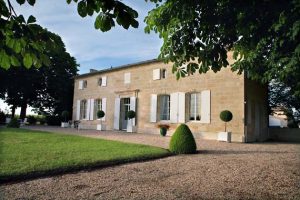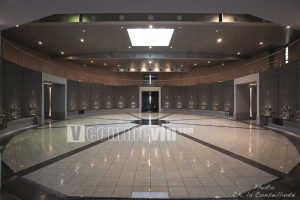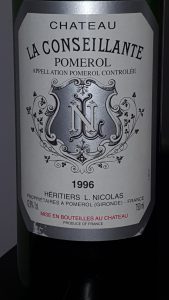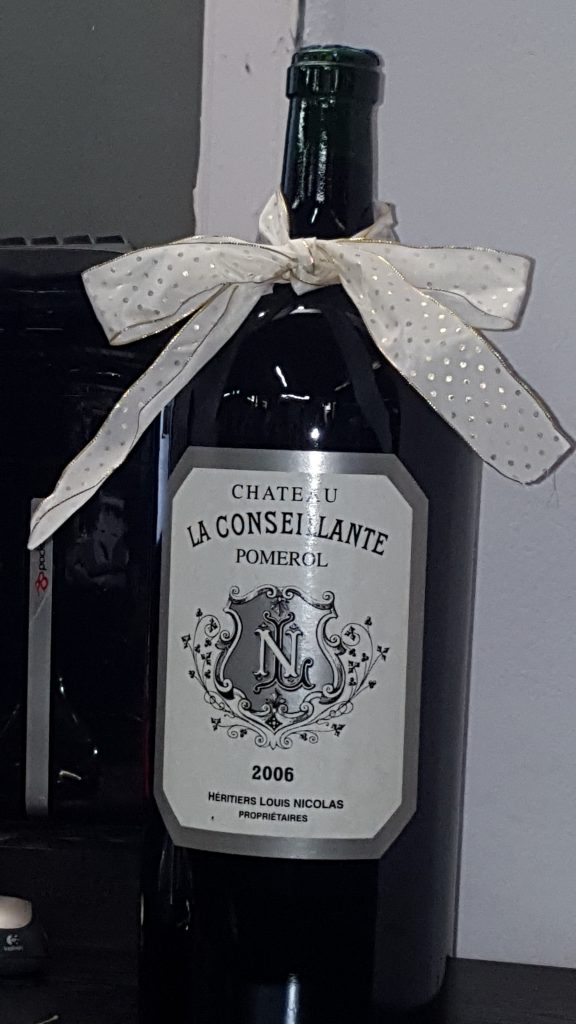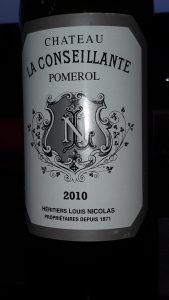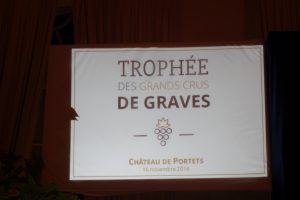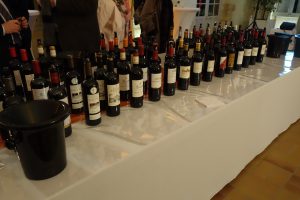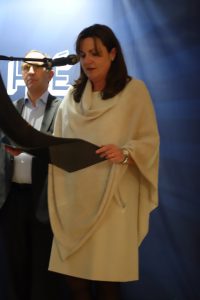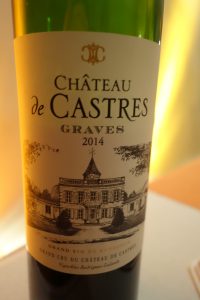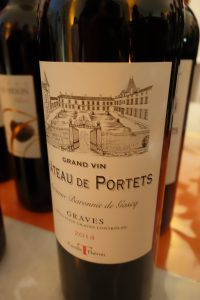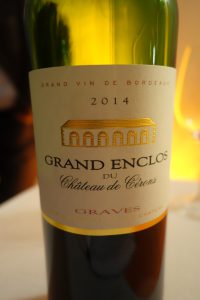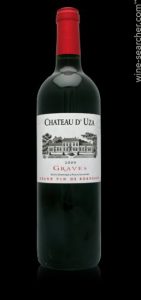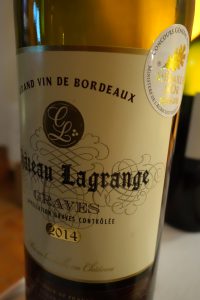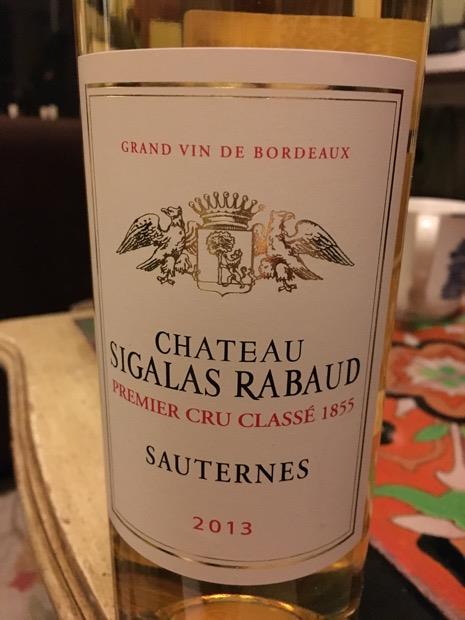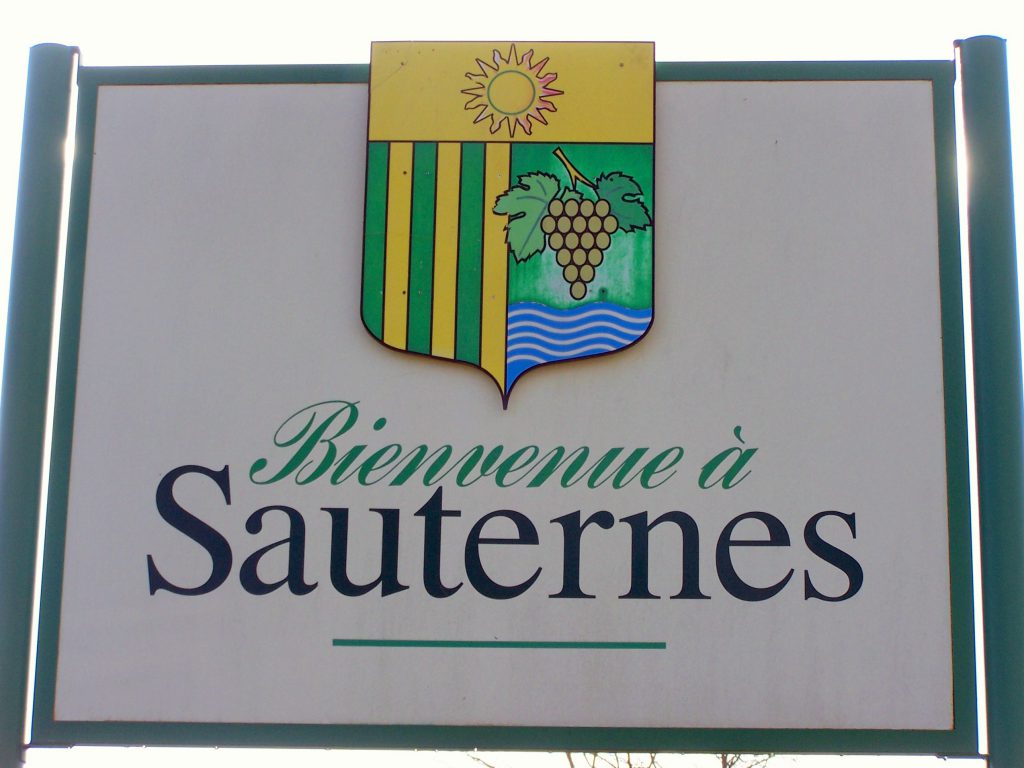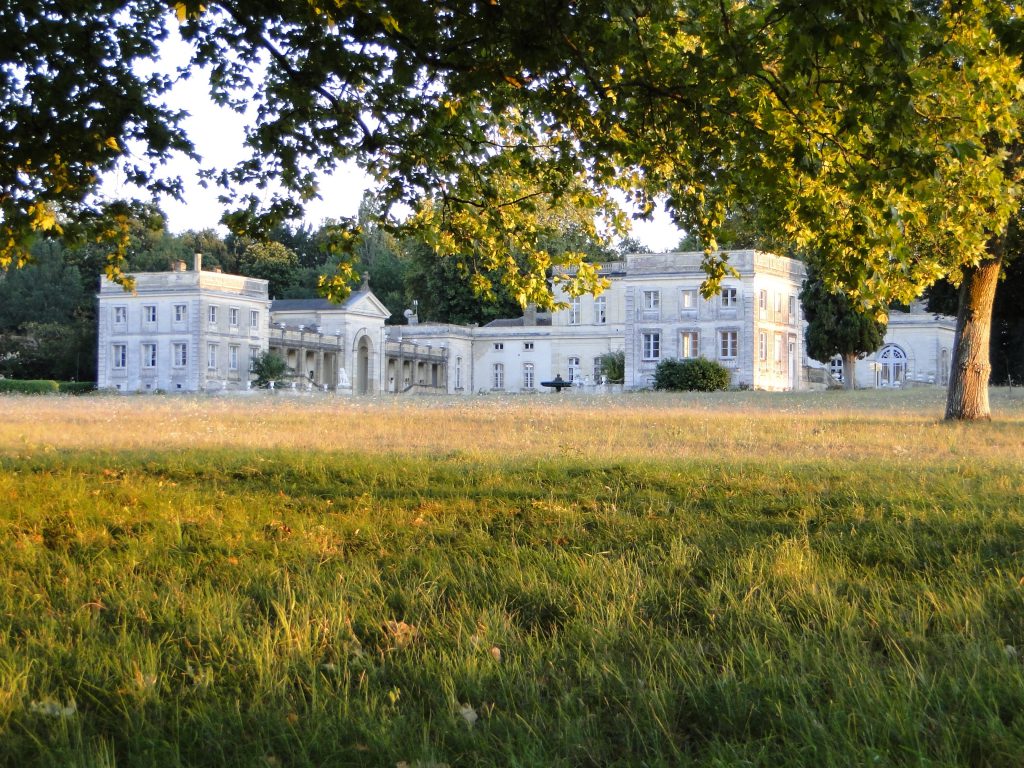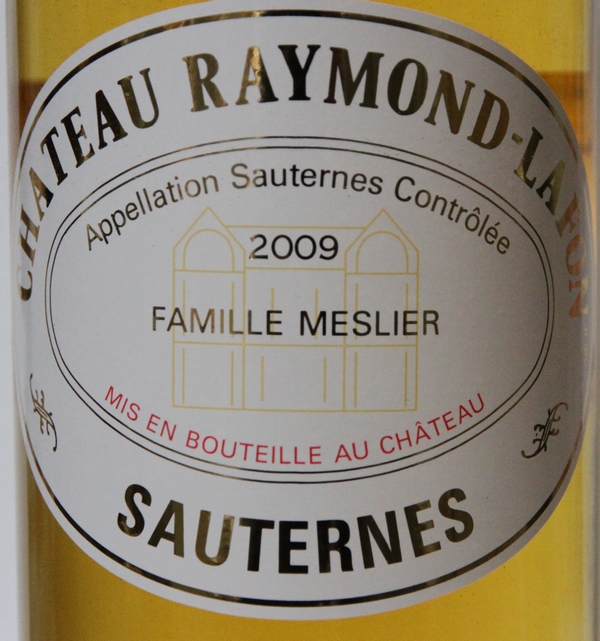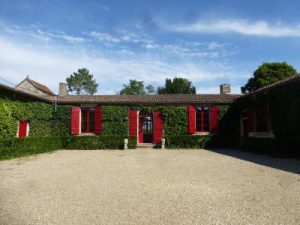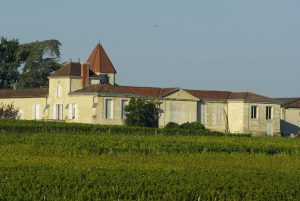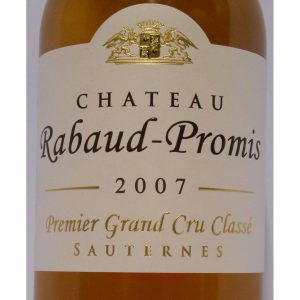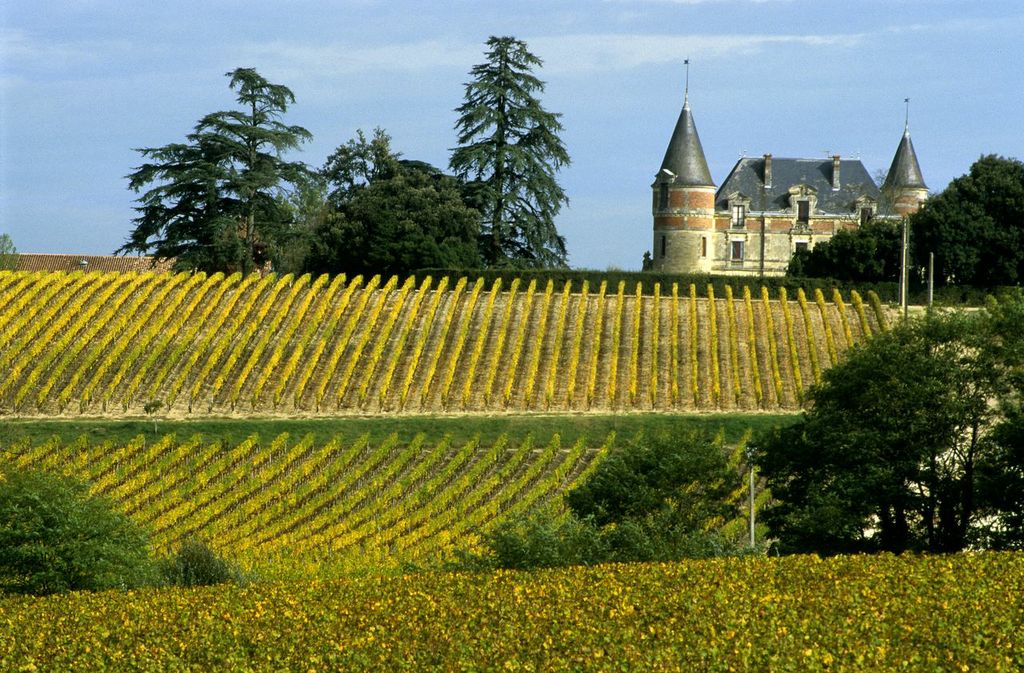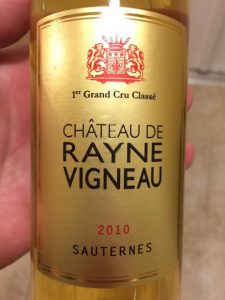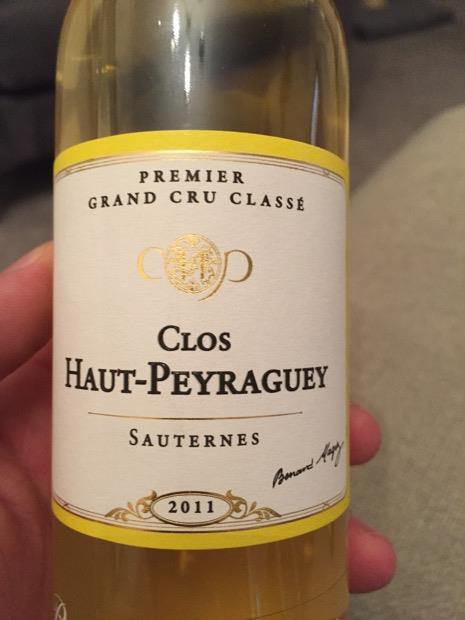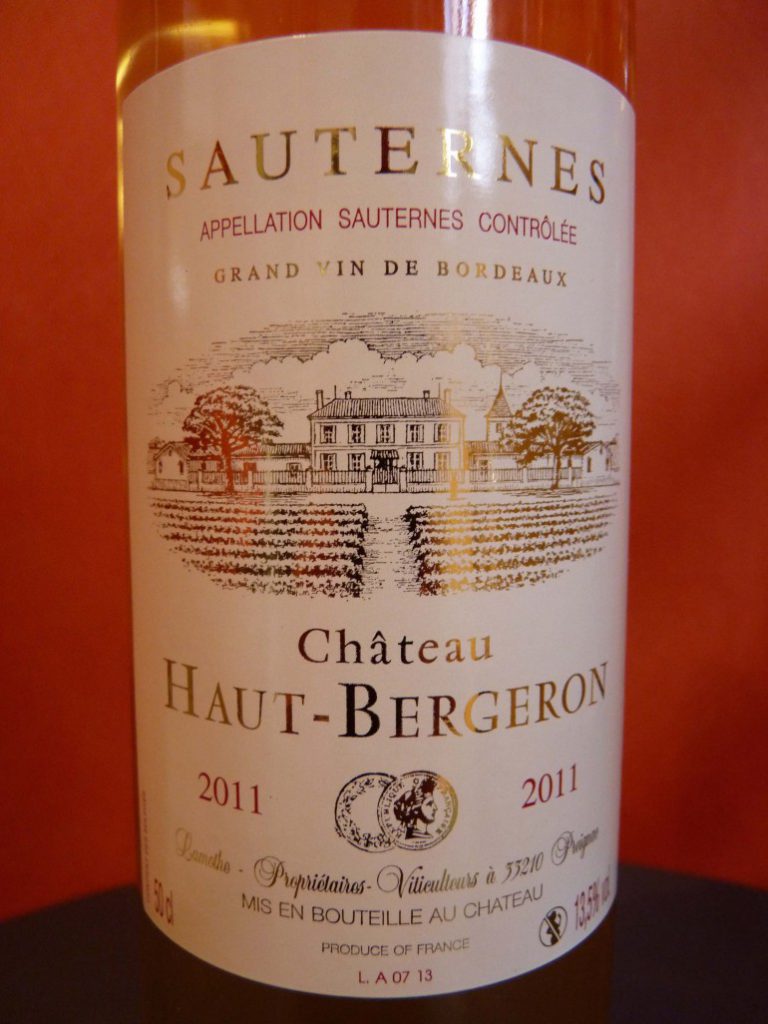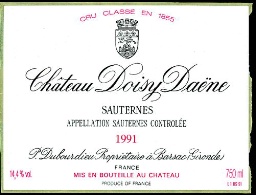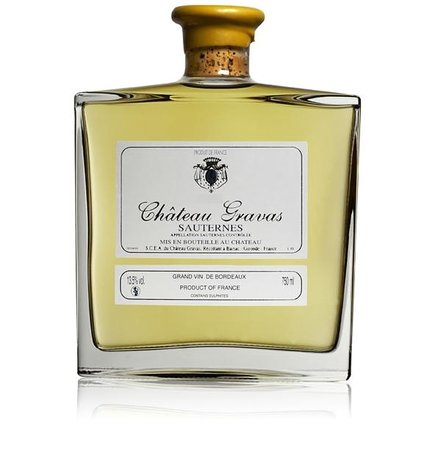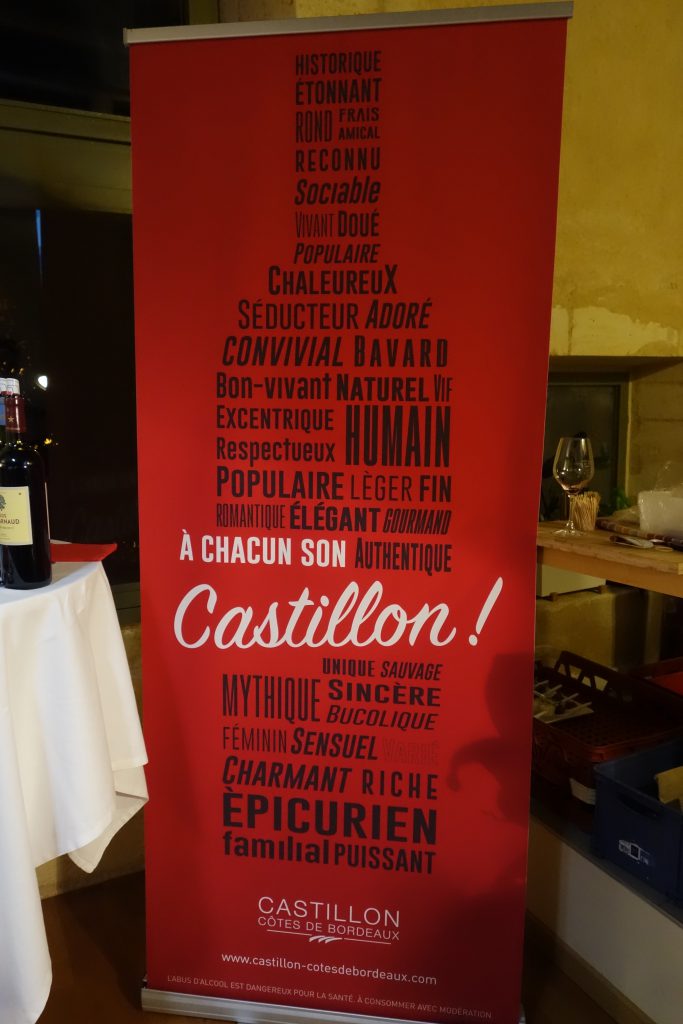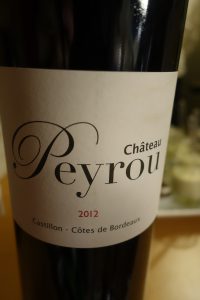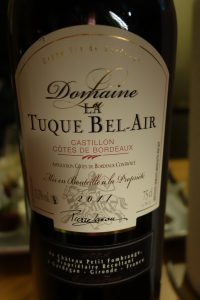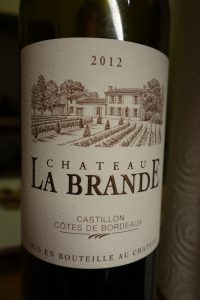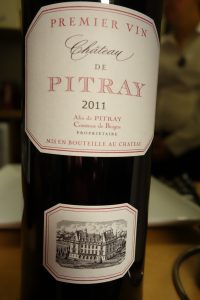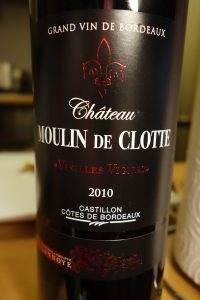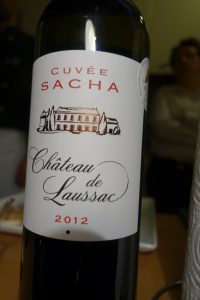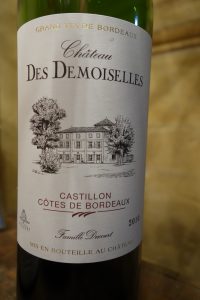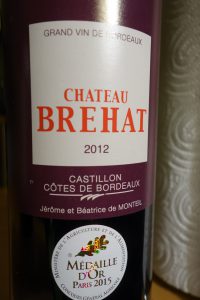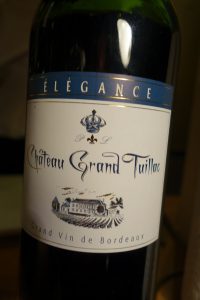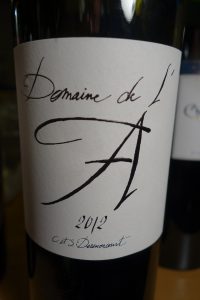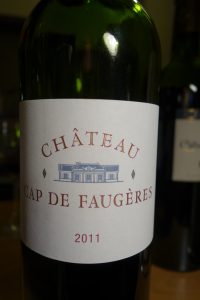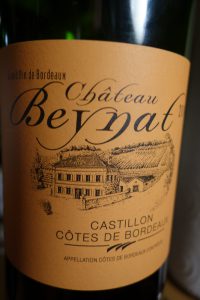Pauillac
======
Armailhac (62% Cabernet Sauvignon, 28% Merlot, 8% Cabernet Franc, and 2% Petit Verdot)
N: Sweet oak for the sweet fruit (blackcurrant and rich ripe blackberry).
P: Mouthfilling, rich, and attractive, but lacks backbone. Marked acidity on finish coats the teeth. Oak comes through too strongly, but this may just be temporary.
Batailley (85% Cabernet Sauvignon, 12% Merlot, and 3% Cabernet Franc)
N: Ripe fruit and plenty of oak, perhaps too much at this stage. Classic.
P: Round seductive attack, then dips, then returns with an aftertaste marked by acidity, tannin, and oak (especially the latter). Unexciting, but dependable.
Clerc Milon (55% Cabernet Sauvignon, 29% Merlot, 13% Cabernet Franc, 2% Petit Verdot, and 1% Carménère)
N: Lovely, powerful bouquet with decided violet nuances and some alcohol. Also blackberry and cassis nuances.
P: Round with a fine acid streak. Medium-long aftertaste. Really very good.
Croizet Bages (55% Cabernet Sauvignon, 41% Merlot, and 4% Cabernet Franc)
N: Sweet and simple, needs time to express itself.
P: Melts in the mouth. Sensual and fruit forward with sweet oak on the finish, perhaps too much at the present time. Simple structure and weak on the middle palate. Better than Croizet Bages has been in the past, but the improvement is nowhere near as patent as with the sister estate in Margaux, Rauzan-Gassies.
Grand Puy Ducasse (65% Cabernet Sauvignon and 35% Merlot)
N: Floral and grassy along with sweet red fruit, but not very concentrated.
P: Starts out deceptively soft, going on to show blackcurrant flavors and velvety tannin that converge into an aftertaste with marked teeth-coating acidity and plenty of oak – but which stops short of too much. A more commercial style for mid-term drinking.
Grand Puy Lacoste (79% Cabernet Sauvignon and 21%)
N: Slightly jammy blackcurrant with graphite nuances. Upfront, attractive, and with good oak.
P: Soft with excellant resonance. Wonderful lively acidity. Thanks to its elegance, it seems like the marriage of Margaux and Pauillac. Great finish and class.
Haut Bages Libéral (75% Cabernet Sauvignon and 25% Merlot)
N: Unmistakable Pauillac characteristics. Muted and a little jammy with hints of blackcurrant and crushed blackcurrant leaves.
P: Mouthfilling, easy-drinking wine. Chunky and spherical, but also a touch hollow on the middle palate. Simple fruit. Typical of its appellation and with the freshness of the vintage. Good value for money.
Lafite Rothschild (92% Cabernet Sauvignon, 8% Merlot)
Lovely trademark Lafite nose words cannot aptly describe. Suffice it to say that it is deep and subtle with an unmistakable violet element as well as muted graphite and coffee aromas. The wine has a gorgeous texture on the palate with the guts to back up the tremendous elegance. The aftertaste is deliciously long and aromatic. Check back in 2050! This Lafite proves that the best wines of the vintage, thanks to a streak of lively fresh acidity, have what it takes to age, as well as a unique balance between fruit, tannin, and acidity. This Lafite was one of the best wines I tasted all week. It’s nice not to be disappointed!
Latour: 2005 Château Latour (87% Cabernet Sauvignon, 12% Merlot, 0.5% Cabernet Franc, and 0.5% Petit Verdot)
This looks perhaps five years little older than its age (twelve years). The nose is redolent of luscious ripe fruit with captivating earthy nuances, accompanied by notes of pencil shavings typical of this estate as well as other Pauillacs. This graphite quality comes through on the palate as well. The taste is thirst quenching and follows through flawlessly with liquorice, blackcurrant, and wildberry flavors. There is a beautiful silky texture that leads into a majestic aftertaste with extremely fine-grained tannin and candied black fruit nuances. Last year, the 2000 Latour was poured and everyone was surprised how ready to drink it was. This 2005 is another kettle of fish. Give it another 10 years at least to make the most of it. Très grand vin.
Lynch Bages (75% Cabernet Sauvignon, 19% Merlot, 4% Cabernet Franc, and 2% Petit Verdot)
N: Fine, rich, and subtle, but largely closed now.
P: Nice mouthful of wine with rich blackcurrant flavors. Great balance between fruit, acidity, and tannin. Some roast coffee aromatics. A little alcohol on finish. Will undoubtedly age well.
Lynch Moussas (83% Cabernet Sauvignon and 17% Merlot)
N: Some reduction smells. Aromas of oak and jam and a soupçon of mint. Lacks definition.
P: Medium-heavy mouth feel but falls down somewhat after the attack. Nevertheless, an authentic Pauillac with a tangy, slightly dry finish and good oak (although this must be kept from becoming overpowering in the coming months). Good value for money.
Château Mouton Rothschild (84% Cabernet Sauvignon, 13% Merlot, and 3% Petit Verdot)
The bouquet is undefined and obviously too young. It is nevertheless ethereal, and promising. The wine is fresh, big, and sinewy on the palate with great blackcurrant flavors. Both tannin and fresh acidity – the hallmark of the 2016 vintage – spread out over the palate, working into a long, classic aftertaste with a velvety texture and cedar overtones. Bit dry on the finish. Mouton can be uneven, but this one is a real winner. It is a virile wine, on the massive side. Revisit a few decades from now.
Pichon Baron (85% Cabernet Sauvignon and 15% Merlot)
N: Classy, brambly nose very typical of the estate with hints of fresh leather. Subdued only because very young.
P: Big with lovely tannin. Deep fruit and a certain earthiness. Refined and stately. Seems a little tough now, but just you wait! A superb Baron with tremendous ageing potential.
I usually don’t mention associated wines in these notes (2
nd and 3
rd wines, etc.), but 2016 Château Pibran AOC Pauillac really shone too.
Pichon Comtesse (75% Cabernet Sauvignon, 21% Merlot, and 4% Cabernet Franc)
N: Sweet, subtle lovely Médoc bouquet with sweet blueberry. Could be mistaken for a fine Margaux.
P: Perfectly round and rich on entry, going on to show great acidity (that coats the teeth), purity, restraint, and a velvety texture. Juicy, with a medium-heavy mouth feel and a great long aftertaste. A slight change in style.
I enjoy comparing Pichon Baron and Pichon Comtesse from the same vintage after a few years bottle age. The exercise with the 2016s should be absolutely fascinating because both are stellar!
Pontet Canet (60% Cabernet Sauvignon, 35% Merlot 4% Cabernet Franc, and 1% Petit Verdot)
N: Not together at this early stage, but there are spicy (cinnamon) notes to back up the incipient fruitiness.
P: Ah, the palate is more like it! The 2016 fresh acidity is there, along with a lovely, long aftertaste showing textured tannin and the estate’s pure mineral quality. Above and beyond the aforementioned freshness, the wine displays great tension and balance. Pontet Canet’s progression is confirmed.
The tasting notes don’t belong here, but Alfred Tesseron also had us taste wine from his new California estate, Pym-Rae (to be renamed Tesseron Vineyards). Located in Napa Valley’s Mount Veeder appellation that previously belonged to the late actor, Robyn Williams.
Saint-Estèphe
==========
Calon Ségur (56% Cabernet Sauvignon, 35% Merlot, 7% Cabernet Franc, and 2% Petit Verdot)
N: Fairly shut-in at this early stage, but enticing blueberry notes are starting to emerge.
P: Melts in the mouth. Appetizing. Tight-knit with lots of energy. Wonderful, fresh Médoc fruit. 100% new oak, but the wine can take it. Excellent tannin on finish. A great success. An estate going from strength to strength.
I must also mention the other vineyard they own in Saint-Estèphe (not the second wine, Marquis de Calon): Château Capbern, an absolute champion in terms of value for money!
Cos d’Estournel (76% Cabernet Sauvignon, 23% Merlot, and 1% Cabernet Franc)
N: Lovely barrel cellar bouquet along with blueberry and blackberry liqueur aromas.
P: Big volume on the palate. Soft and rich. Velvety texture and very long aftertaste. Considerable ageing potential. A toned-down modern style. Classy wine. The effect of ageing in new oak must nevertheless be followed closely.
Cos Labory (53% Cabernet Sauvignon, 44% Merlot, and 3% Petit Verdot)
N: Somewhat herbaceous, but sweet red fruit is lurking.
P: Tannin is a little tough and there is acidity in spades, but also a more modern and approachable side to this wine than in the past. The dryish finish features berry fruit and new oak.
Lafon Rochet (67% Cabernet Sauvignon, 25% Merlot, 6% Cabernet Franc, and 2% Petit Verdot)
N: A lovely mixture of graphite and black fruit with a few rustic notes.
P: Excellent mouth feel and texture. Sweet fruit and smoothness one has come to expect from this estate. Refined and has a bright future ahead of it.
Montrose (68% Cabernet Sauvignon, 25% Merlot, and 7% Cabernet Franc)
N: Gravitas. Deep and nuanced. Leather, butter, and vanilla accompany the blackcurrant aromas.
P: Quite imposing. Melts in the mouth and coats the palate. Concentrated. Fills out well and seems an ideal marriage between old and new styles. Blackcurrant galore with a suggestion of mint/eucalyptus. Impressive long aftertaste with a mineral aspect. Montrose is on a roll…
Saint Julien
========
Beychevelle (47% Cabernet Sauvignon, 47% Merlot, 5% Petit Verdot, and 1% Cabernet Franc)
N: Lovely fresh nose of candied blackcurrant and crushed blackcurrant leaves along with mineral nuances.
P: Great Médoc berry fruit that develops beautifully on the palate. Round, well-focused, and classic with an attractive tartness and mineralty. There was a time when Beychevelle was ho-hum. Not any more, and it clearly punches above its classification. I just hope the oak integrates – as I think it will – to alleviate the slight dryness on the finish. Fine potential.
I visited Beychevelle’s new cellar afterward. This is as “state-of-the-art” as anywhere in the world and was built with esthetics in mind. There is plate glass everywhere with a beautiful view over Saint-Julien’s gravelly rises. Definitely worth a visit.
Branaire Ducru (64% Cabernet Sauvignon, 27% Merlot, 6% Petit Verdot, and 3% Cabernet Franc)
N: Classic sweet fruit with some chocolate and pencil shaving notes. A touch biscuity.
P: The balance on the nose is there on the palate as well, with rich, sleek tannin. Broad-based with attractive fruit and nice grip on the finish. As good as ever.
Gruaud Larose (61% Cabernet Sauvignon, 29% Merlot, 7% Cabernet Franc, and 3% Petit Verdot)
N: Blackberry liqueur and oak. A little musky.
P: Rich, compact, and refreshing although a tad weak on the middle palate. Cleary needs to digest the oak, but there is a good solid base of ripe fruit there waiting to emerge.
Lagrange (70% Cabernet Sauvignon, 24% Merlot, and 6% Petit Verdot)
N: Enticing, fresh, primary, and rich, with coffee and ethereal red and black fruit brandy aromas.
G: Soft, mouth-coating tannin for this sturdy wine with unmistakable Médoc fruit and a fairly long aftertaste that is a little dry at this point. A good effort from this reliable estate.
Langoa Barton (55% Cabernet Sauvignon, 37% Merlot, and 8% Cabernet Franc)
N: Somewhat subdued, but the trademark blackcurrant and graphite are just waiting to come through.
P: Fresh and focused with fine-grained tannin. Lively, easy-going, “fluid”, and will be enjoyable young or old. Good oak. Well-made. A pleasure.
Léoville Barton (86% Cabernet Sauvignon and 14% Merlot)
N: Fruity, but lacks spark at this early stage.
P: Gorgeous velvety texture. Utter class. Seamless development. Top-quality tannin. Fruit needs to come through, but all the right signs are there. Very long aftertaste. Perhaps beats Léoville Poyferré by a nose.
Léoville Las Cases (75% Cabernet Sauvignon, 14% Merlot, and 11% Cabernet Franc)
N: Deep, dark blackberry and cassis fruit one would expect from Las Cases.
G: A big mouthful of wine with tons of fruit, mostly cherry at this stage. The volume and intensity are not overbearing and the wine is, as usual, in classic mode. Balance and terroir are the bywords here, because you would instinctively guess that stretch of land between Saint-Julien and Pauillac if tasted blind. An unquestionably fine vintage from this much-respected “super-second” growth.
Léoville Poyferré (60% Cabernet Sauvignon, 33% Merlot, 5% Petit Verdot, and 2% Cabernet Franc)
N: Trademark bouquet of blackcurrant fruit along with fresh forest floor aroma and graphite. Oak is not obtrusive (neither is it on the palate).
P: Smooth, sensual mouth feel and lots of deep fruit working its way into a classic finish. Seems almost syrupy at one point and then segues into minerality. Both big and refined. More fruit forward and a touch less serious than Las Cases, but a great wine.
Saint Pierre (73% Cabernet Sauvignon, 21% Merlot, and 6% Cabernet Franc)
N: Open, sexy bouquet of violet, cassis, blueberry cedar, and graphite.
P: Round and melts in the mouth. Maybe a little simplistic, but in keeping with the château’s fruity crowd-pleasing style. Will be delicious early on. Tangy finish that is a little dry now.
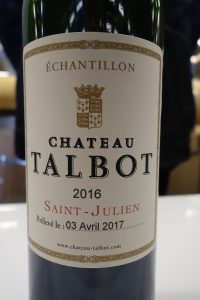
Talbot (55% Cabernet Sauvignon, 39% Merlot, and 6% Petit Verdot)
N: Very refined, subtle nose. Not a hair out of place. Subtle with some roast coffee overtones.
P: Big and chunky. A meaty textbook Cab. Mouthfilling. The aftertaste defines fine Médoc. Excellent quality tannin and good acidity for a long life.
![53car1[1]](http://www.bordeauxwineblog.com/wp-content/uploads/2017/05/53car11.jpg)

